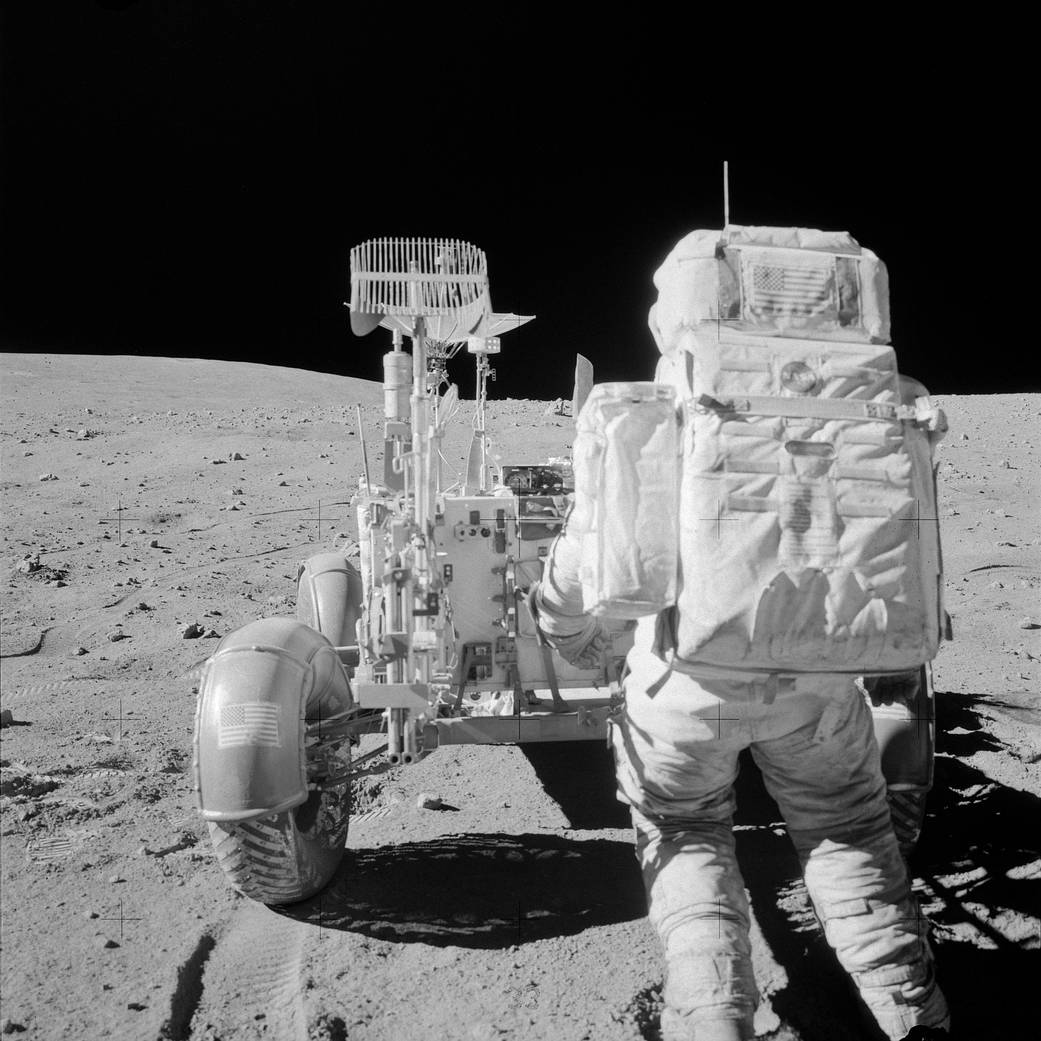This week in 1972, Apollo 16 astronauts Charles M. Duke Jr., lunar module pilot, and John W. Young, commander, landed on the lunar surface. This photo, taken during the mission’s second extravehicular activity, shows Young retrieving tools from the Lunar Roving Vehicle’s Hand Tool Carrier. NASA’s Marshall Space Flight Center designed, developed and managed the production of the lunar rover and the Saturn V rocket that took astronauts to the moon. Today, Marshall is developing NASA’s Space Launch System, the most powerful rocket ever built that will be capable of sending astronauts deeper into space than ever before, including to Mars. The NASA History Program is responsible for generating, disseminating, and preserving NASA’s remarkable history and providing a comprehensive understanding of the institutional, cultural, social, political, economic, technological, and scientific aspects of NASA’s activities in aeronautics and space. For more pictures like this one and to connect to NASA’s history, visit the History Program’s webpage.
1 min read




























